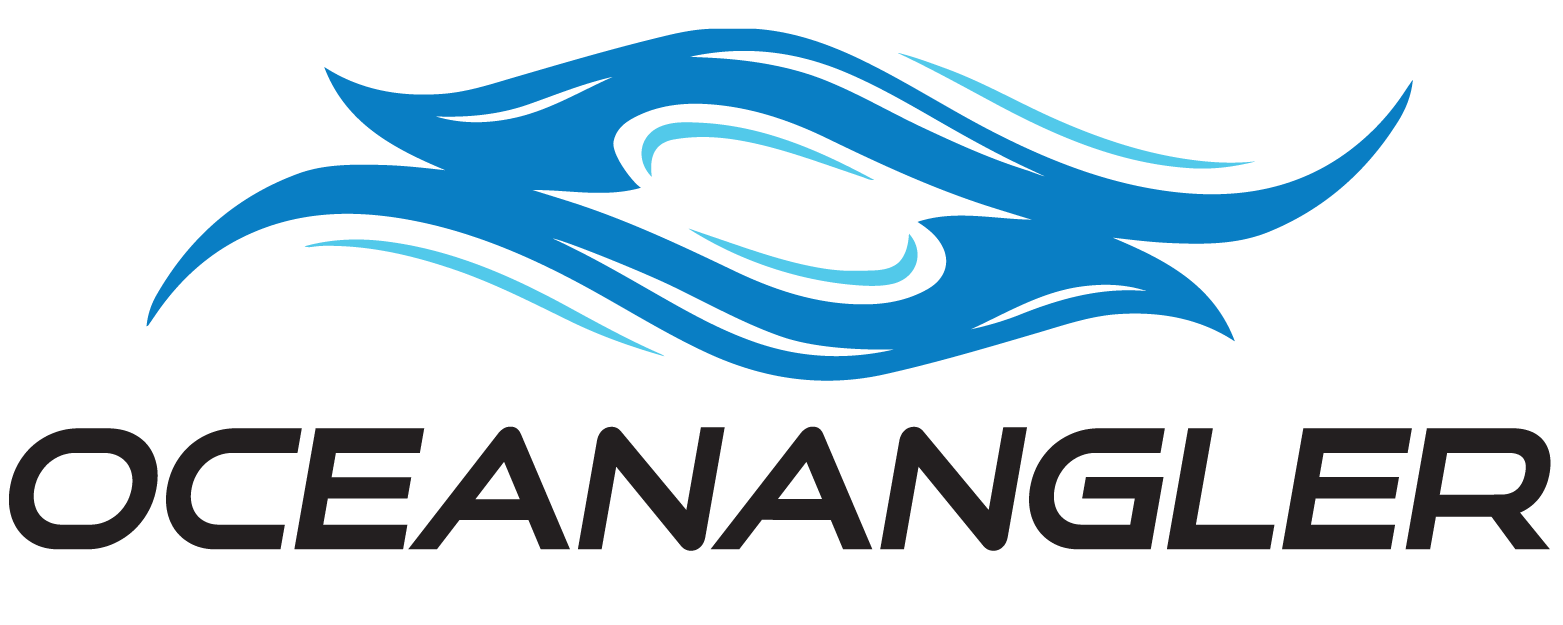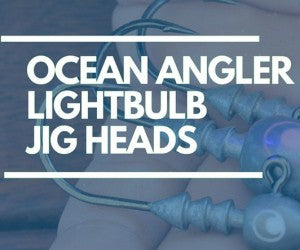Which soft-bait lead-head?
Who’d have thought that a lump of lead attached to a hook would be so important to fishing success? Well, to be a truly good soft-baiter you really do need to give this aspect plenty of consideration! In addition to selecting the lightest weight lead-head that will get down in the prevailing conditions, you should take other aspects into account, including the lead-head’s shape and the coating used on it, as well as the quality of the hook, its shank length and the gape size.
Head shape: Our Ocean Angler Lightbulbs don’t have a particularly radical shape, but their simple, streamlined form allows them to travel through the water nicely and efficiently when worked with the rod or retrieved with the reel, and they rarely snag up. (If that happens, just ease the pressure off, motor well up past the snagged lure in the opposite direction, then quickly wind up, with the outfit pointed towards the snag, until the pressure starts to come on. At this point, hold the spool firmly and give the outfit a good sharp heave backwards – that will free the lure 3 out of 4 times.)
Lead-head coatings: It’s an advantage to have some sort of coating on the lead-head. We have gone for a UV-light-reflecting coating, resulting in our OA Lightbulb. The bad news is we can’t see UV light, so some faith is required that it’s actually there ! (Even a ‘UV-reflecting light’ torch only provides a good indication of UV presence; as mentioned, we can’t see UV light – instead, the torch highlights UV ‘reactive’ coatings.) But, fortunately, the fish sure can, with research showing that the most effective lures usually contain UV-light-reflective qualities. The UV coating appears to work particularly well in depths to around 10-12 metres, especially during cloudy conditions, when it really makes the lead-head stand out against the surroundings, but if the water is clear, the heads can still reflect UV light much further down. At times this quality makes a massive difference to the number of fish that bite your lure.
Hook quality: We’ve often discussed whether we should change the Lightbulb hook over to an Owner, as they’re on our other lures and have a fantastic reputation – but every time the conclusion is the same: if it ain’t broke, why try and fix it? I’ve personally used many hundreds of Lightbulbs over the years and never lost a big fish to a hook straightening out. Yes, some have been crunched inwards or sideways, as big snapper have teeth capable of crushing shellfish, but never bent out (keeping in mind I use 20lb trace maximum). These hooks are also super sharp, have a micro barb for easy release, and are surprisingly rust resistant.
Hook-shank length: I personally like a relatively short shank on my lead-head hook, allowing the remainder of the soft-bait tail to have plenty of fish-attracting movement – and why wouldn’t you when using a particularly mobile lure such as the Z-Man? A short shank also allows anglers to swap out all soft-plastic tail lengths from 3.75″ to 7″. I certainly catch more than my share of fish when using the shorter-shank version of Lightbulb, even with 7″ tails, but realise my hook-up process helps make it work. (I keep my rod pointing along the line and respond to bites by winding the reel rather than striking right away, enabling those fish that don’t hook up to have another crack.) However, we realise that other anglers feel strongly about having the hook point positioned further along the longer soft-baits, so we also have a long-shank Lightbulb that caters for you guys.
The perfect hook gape: All our Lightbulbs have 3/0 hooks, with trial and error over countless trips and many years proving this is the perfect compromise. Larger hooks run the risk of the point/barb remaining outside the fish’s mouth when the soft-bait is taken, leading to no hook-ups upon striking, while a smaller hook gape sees less flesh secured, resulting in the biggest fish ripping off during the fight, thanks to a combination of weight, power and tidal flow. Having said that, there is an argument for, say, a 2/0 hook if purely targeting pan-size snapper…
Weight matters: Same as most other brands, Lightbulbs are available in the following weights: 1/4, 3/8, 1/2, 5/8, 3/4 and 1 ounce. It may seem ridiculous to have such tiny amounts of weight separating the different lead-head options, but you’ll be surprised by what a difference it makes when out on the water. In all cases it’s best to use the lightest possible weight that gets your soft-bait offering down to where the fish are, as a slow descent (except in very deep waters, when it takes too long) means your lure remains nicely available and apparently vulnerable for longer. Or, if fishing over reef and weed, you can fish your soft-bait back more slowly, as it’s not constantly plummeting back into the snaggy bottom after every jiggling uplift of your rod. A lure that hovers for longer above the weed, in the prime strike zone, is more likely to be eaten by fish sheltering amongst it. However, if unable to determine the best casting angles that allow the lighter weights to be used, as the better soft-baiters can, and/or if the wind is blowing, the less experienced soft-baiters can largely overcome some challenges by simply using the heavier lead-heads when fishing over a relatively clean sea floor. Here, the snapper will be feeding on the shellfish, worms, crabs etc, so soft-baiters can either jiggle the lure slowly back to the boat or drag it behind the boat, keeping additional rod movements to a minimum (in this case only!) for best results. Occasionally letting out more line, or winding some in, can reap rewards, with the different speed, or pause, exciting hungry bites!
So there you have it – our OA Lightbulbs might look pretty basic on the surface, but a heap of thought and effort has been put into them, resulting in the best soft-bait lead-heads on the market!




Share:
Winter workups are happening!
More great winter fishing